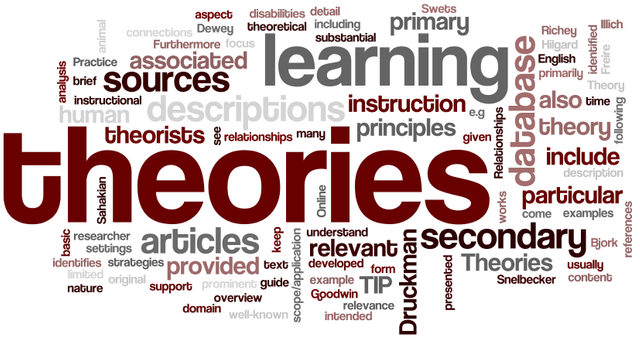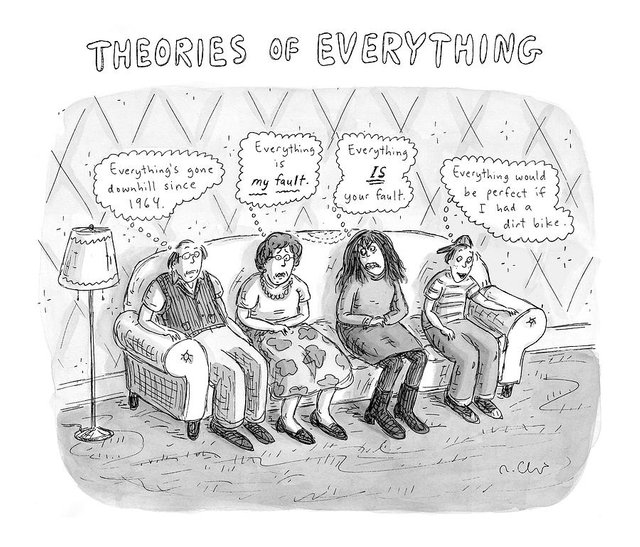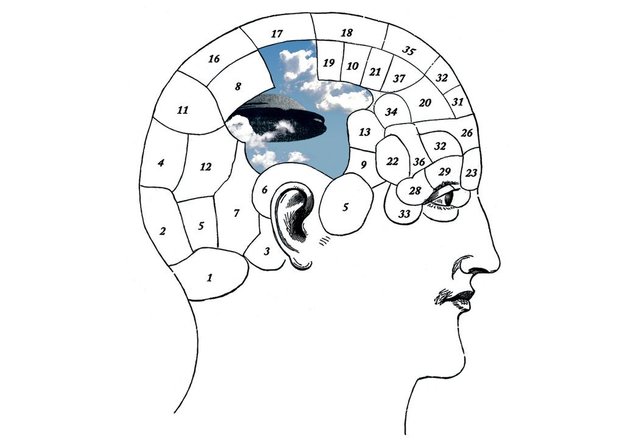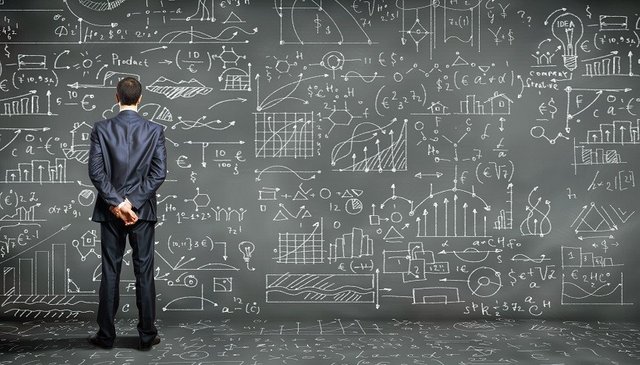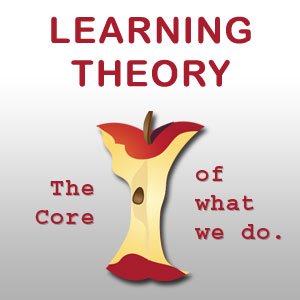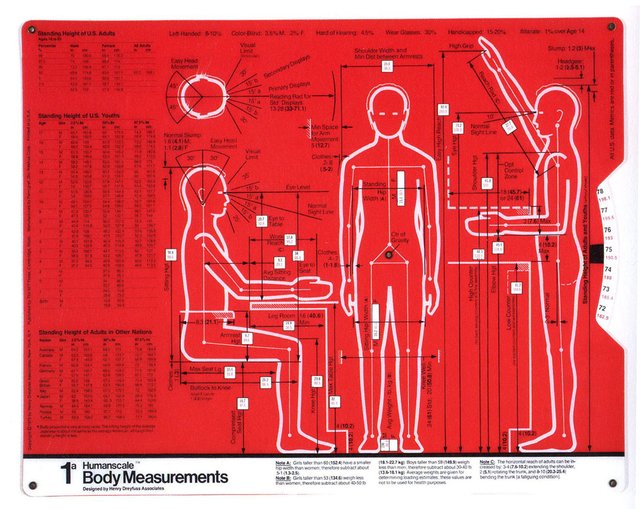< THEORY OF EVERYTHING >
@A theory of everything (ToE), final theory, ultimate theory, or master theory is a hypothetical single, all-encompassing, coherent theoretical framework of physics that fully explains and links together all physical aspects of the universe.[1]:6 Finding a ToE is one of the major unsolved problems in physics. Over the past few centuries, two theoretical frameworks have been developed that, as a whole, most closely resemble a ToE. These two theories upon which all modern physics rests are general relativity (GR) and quantum field theory (QFT). GR is a theoretical framework that only focuses on gravity for understanding the universe in regions of both large-scale and high-mass: stars, galaxies, clusters of galaxies, etc. On the other hand, QFT is a theoretical framework that only focuses on three non-gravitational forces for understanding the universe in regions of both small scale and low mass: sub-atomic particles, atoms, molecules, etc. QFT successfully implemented the Standard Model and unified the interactions (so-called Grand Unified Theory) between the three non-gravitational forces: weak, strong, and electromagnetic force.[2]:122
@Through years of research, physicists have experimentally confirmed with tremendous accuracy virtually every prediction made by these two theories when in their appropriate domains of applicability. In accordance with their findings, scientists also learned that GR and QFT, as they are currently formulated, are mutually incompatible – they cannot both be right. Since the usual domains of applicability of GR and QFT are so different, most situations require that only one of the two theories be used.[3][4]:842–844 As it turns out, this incompatibility between GR and QFT is apparently only an issue in regions of extremely small-scale and high-mass, such as those that exist within a black hole or during the beginning stages of the universe (i.e., the moment immediately following the Big Bang). To resolve this conflict, a theoretical framework revealing a deeper underlying reality, unifying gravity with the other three interactions, must be discovered to harmoniously integrate the realms of GR and QFT into a seamless whole: a single theory that, in principle, is capable of describing all phenomena. In pursuit of this goal, quantum gravity has become an area of active research.
@Eventually a single explanatory framework, called "string theory", emerged that intends to be the ultimate theory of the universe. String theory posits that at the beginning of the universe (up to 10−43 seconds after the Big Bang), the four fundamental forces were once a single fundamental force. According to string theory, every particle in the universe, at its most microscopic level (Planck length), consists of varying combinations of vibrating strings (or strands) with preferred patterns of vibration. String theory further claims that it is through these specific oscillatory patterns of strings that a particle of unique mass and force charge is created (that is to say, the electron is a type of string that vibrates one way, while the up-quark is a type of string vibrating another way, and so forth).
@Initially, the term theory of everything was used with an ironic connotation to refer to various overgeneralized theories. For example, a grandfather of Ijon Tichy – a character from a cycle of Stanisław Lem's science fiction stories of the 1960s – was known to work on the "General Theory of Everything". Physicist John Ellis claims[5] to have introduced the term into the technical literature in an article in Nature in 1986.[6] Over time, the term stuck in popularizations of theoretical physics research.
@TWENTY-FIVE PARTICLES AND four forces. That description—the Standard Model of particle physics—constitutes physicists’ best current explanation for everything. It’s neat and it’s simple, but no one is entirely happy with it. What irritates physicists most is that one of the forces—gravity—sticks out like a sore thumb on a four-fingered hand. Gravity is different.
QUANTA MAGAZINE
author photo
ABOUT
@Original story reprinted with permission from Quanta Magazine, an editorially independent publication of the Simons Foundation whose mission is to enhance public understanding of science by covering research developments and trends in mathematics and the physical and life sciences.
@Unlike the electromagnetic force and the strong and weak nuclear forces, gravity is not a quantum theory. This isn’t only aesthetically unpleasing, it’s also a mathematical headache. We know that particles have both quantum properties and gravitational fields, so the gravitational field should have quantum properties like the particles that cause it. But a theory of quantum gravity has been hard to come by.
@In the 1960s, Richard Feynman and Bryce DeWitt set out to quantize gravity using the same techniques that had successfully transformed electromagnetism into the quantum theory called quantum electrodynamics. Unfortunately, when applied to gravity, the known techniques resulted in a theory that, when extrapolated to high energies, was plagued by an infinite number of infinities. This quantization of gravity was thought incurably sick, an approximation useful only when gravity is weak.
@Since then, physicists have made several other attempts at quantizing gravity in the hope of finding a theory that would also work when gravity is strong. String theory, loop quantum gravity, causal dynamical triangulation and a few others have been aimed toward that goal. So far, none of these theories has experimental evidence speaking for it. Each has mathematical pros and cons, and no convergence seems in sight. But while these approaches were competing for attention, an old rival has caught up.
@The theory called asymptotically (as-em-TOT-ick-lee) safe gravity was proposed in 1978 by Steven Weinberg. Weinberg, who would only a year later share the Nobel Prize with Sheldon Lee Glashow and Abdus Salam for unifying the electromagnetic and weak nuclear force, realized that the troubles with the naive quantization of gravity are not a death knell for the theory. Even though it looks like the theory breaks down when extrapolated to high energies, this breakdown might never come to pass. But to be able to tell just what happens, researchers had to wait for new mathematical methods that have only recently become available.
@In quantum theories, all interactions depend on the energy at which they take place, which means the theory changes as some interactions become more relevant, others less so. This change can be quantified by calculating how the numbers that enter the theory—collectively called “parameters”—depend on energy. The strong nuclear force, for example, becomes weak at high energies as a parameter known as the coupling constant approaches zero. This property is known as “asymptotic freedom,” and it was worth another Nobel Prize, in 2004, to Frank Wilczek, David Gross, and David Politzer.
@A theory that is asymptotically free is well behaved at high energies; it makes no trouble. The quantization of gravity is not of this type, but, as Weinberg observed, a weaker criterion would do: For quantum gravity to work, researchers must be able to describe the theory at high energies using only a finite number of parameters. This is opposed to the situation they face in the naive extrapolation, which requires an infinite number of unspecifiable parameters. Furthermore, none of the parameters should themselves become infinite. These two requirements—that the number of parameters be finite and the parameters themselves be finite—make a theory “asymptotically safe.”
@In other words, gravity would be asymptotically safe if the theory at high energies remains equally well behaved as the theory at low energies. In and of itself, this is not much of an insight. The insight comes from realizing that this good behavior does not necessarily contradict what we already know about the theory at low energies (from the early works of DeWitt and Feynman).
@While the idea that gravity may be asymptotically safe has been around for four decades, it was only in the late 1990s, through research by Christof Wetterich, a physicist at the University of Heidelberg, and Martin Reuter, a physicist at the University of Mainz, that asymptotically safe gravity caught on. The works of Wetterich and Reuter provided the mathematical formalism necessary to calculate what happens with the quantum theory of gravity at higher energies. The strategy of the asymptotic safety program, then, is to start with the theory at low energies and use the new mathematical methods to explore how to reach asymptotic safety.
@So, is gravity asymptotically safe? No one has proven it, but researchers use several independent arguments to support the idea. First, studies of gravitational theories in lower-dimensional space-times, which are much simpler to do, find that in these cases, gravity is asymptotically safe. Second, approximate calculations support the possibility. Third, researchers have applied the general method to studies of simpler, nongravitational theories and found it to be reliable.
@The major problem with the approach is that calculations in the full (infinite dimensional!) theory space are not possible. To make the calculations feasible, researchers study a small part of the space, but the results obtained then yield only a limited level of knowledge. Therefore, even though the existing calculations are consistent with asymptotic safety, the situation has remained inconclusive. And there is another question that has remained open. Even if the theory is asymptotically safe, it might become physically meaningless at high energies because it might break some essential elements of quantum theory.
@Even still, physicists can already put the ideas behind asymptotic safety to the test. If gravity is asymptotically safe—that is, if the theory is well behaved at high energies — then that restricts the number of fundamental particles that can exist. This constraint puts asymptotically safe gravity at odds with some of the pursued approaches to grand unification. For example, the simplest version of supersymmetry—a long-popular theory that predicts a sister particle for each known particle—is not asymptotically safe. The simplest version of supersymmetry has meanwhile been ruled out by experiments at the LHC, as have a few other proposed extensions of the Standard Model. But had physicists studied the asymptotic behavior in advance, they could have concluded that these ideas were not promising.
MORE QUANTA
JENNIFER OUELLETTE
This Dark Matter Theory Could Solve a Celestial Conundrum
NATALIE WOLCHOVER
Controversial New Theory Suggests Life Wasn't a Fluke of Biology—It Was Physics
NATALIE WOLCHOVER
What Happens When You Mix Thermodynamics and the Quantum World? A Revolution
@Another study recently showed that asymptotic safety also constrains the masses of particles. It implies that the difference in mass between the top and bottom quark must not be larger than a certain value. If we had not already measured the mass of the top quark, this could have been used as a prediction.
@These calculations rely on approximations that might turn out to be not entirely justified, but the results demonstrate the power of the method. The most important implication is that the physics at energies where the forces may be unified—usually thought to be hopelessly out of reach—is intricately related to the physics at low energies; the requirement of asymptotic safety connects them.
@Whenever I speak to colleagues who do not themselves work on asymptotically safe gravity, they refer to the approach as “disappointing.” This comment, I believe, is born out of the thought that asymptotic safety means there isn’t anything new to learn from quantum gravity, that it’s the same story all the way down, just more quantum field theory, business as usual.
@But not only does asymptotic safety provide a link between testable low energies and inaccessible high energies—as the above examples demonstrate—the approach is also not necessarily in conflict with other ways of quantizing gravity. That’s because the extrapolation central to asymptotic safety does not rule out that a more fundamental description of space-time—for example, with strings or networks—emerges at high energies. Far from being disappointing, asymptotic safety might allow us to finally connect the known universe to the quantum behavior of space-time.
@Original story reprinted with permission from Quanta Magazine, an editorially independent publication of the Simons Foundation whose mission is to enhance public understanding of science by covering research developments and trends in mathematics and the physical and life sciences.
'"END"'
< THANK FOR READ THIS POST >

